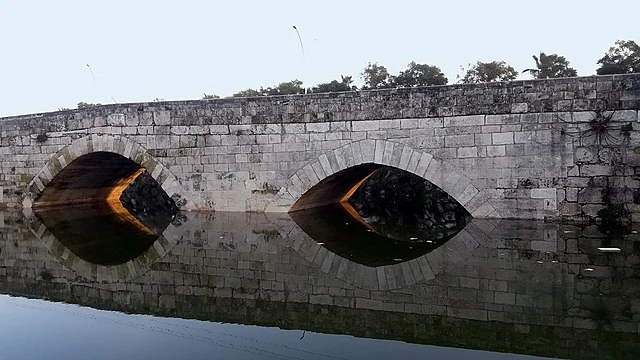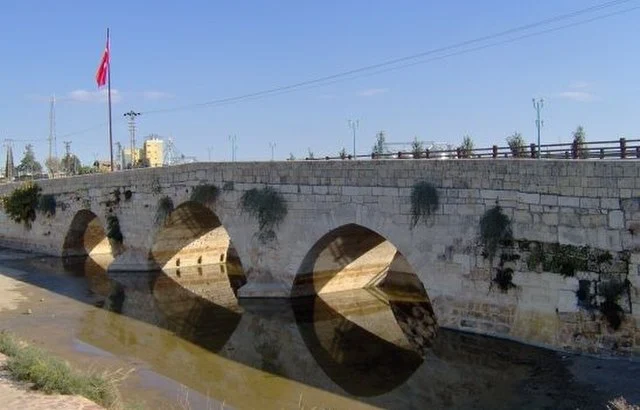The Baç Bridge, located in the Syunik Province of Armenia, stands as a significant piece of medieval Armenian architecture. This stone bridge, crossing the Voghji River, serves as a reminder of Armenia’s rich historical and engineering heritage.
Get your dose of History via Email
Historical Background

Baç Bridge dates back to the 13th century AD, a period marked by the Mongol invasions and the decline of the Bagratid Kingdom of Armenia. During this time, Syunik was a vital region, acting as a cultural and economic hub in the medieval Armenian kingdom. The construction of the Baç Bridge reflects the need for reliable infrastructure to support trade and military movements in a turbulent era.
Architectural Features
The Baç Bridge is a single-span stone bridge. This design, typical of medieval Armenian architecture, shows the influence of both Byzantine and Persian engineering traditions. The bridge measures approximately 15 meters in length, with a width of about 3 meters. Its pointed arch, constructed from carefully cut and placed stones, displays the advanced masonry skills of the period.
Armenian builders of the time favored local materials, primarily basalt and limestone, which were abundant in the region. These materials gave the Baç Bridge both its durability and distinctive appearance. The use of spolia, or repurposed stones from earlier structures, is also evident, showcasing a practical approach to construction in a resource-scarce environment.
Cultural and Economic Importance
The Baç Bridge was more than just a crossing point; it was crucial for local commerce and communication. The bridge connected various settlements within Syunik, facilitating the movement of goods and people. Given its strategic location, it likely played a role in military logistics as well. During the medieval period, control of bridges like Baç often equated to control of the surrounding region.
The bridge’s endurance through centuries of natural and human-induced challenges attests to its importance. Despite the decline of the Armenian Kingdom, the Baç Bridge continued to serve the local population, illustrating its lasting utility.
Preservation and Modern Relevance
Today, Baç Bridge remains a valuable historical monument. Although time and the elements have taken their toll, the structure is relatively well-preserved. It has attracted the attention of historians and archaeologists who recognize its significance in understanding medieval Armenian engineering.
Efforts to preserve the Baç Bridge are essential, as it represents a tangible link to Armenia’s past. By studying and maintaining such structures, we can gain insights into the technological and cultural achievements of the medieval Armenian civilization.
Conclusion
The Baç Bridge is a remarkable example of medieval Armenian engineering. Its construction during a period of political instability highlights the resilience and ingenuity of the Armenian people. The bridge continues to stand as a testament to the importance of infrastructure in historical contexts, reflecting the interconnectedness of culture, economy, and technology in medieval Armenia. Preserving this historical landmark will ensure that future generations can appreciate and learn from this enduring symbol of Armenia’s architectural heritage.
Source:
Wikipedia

